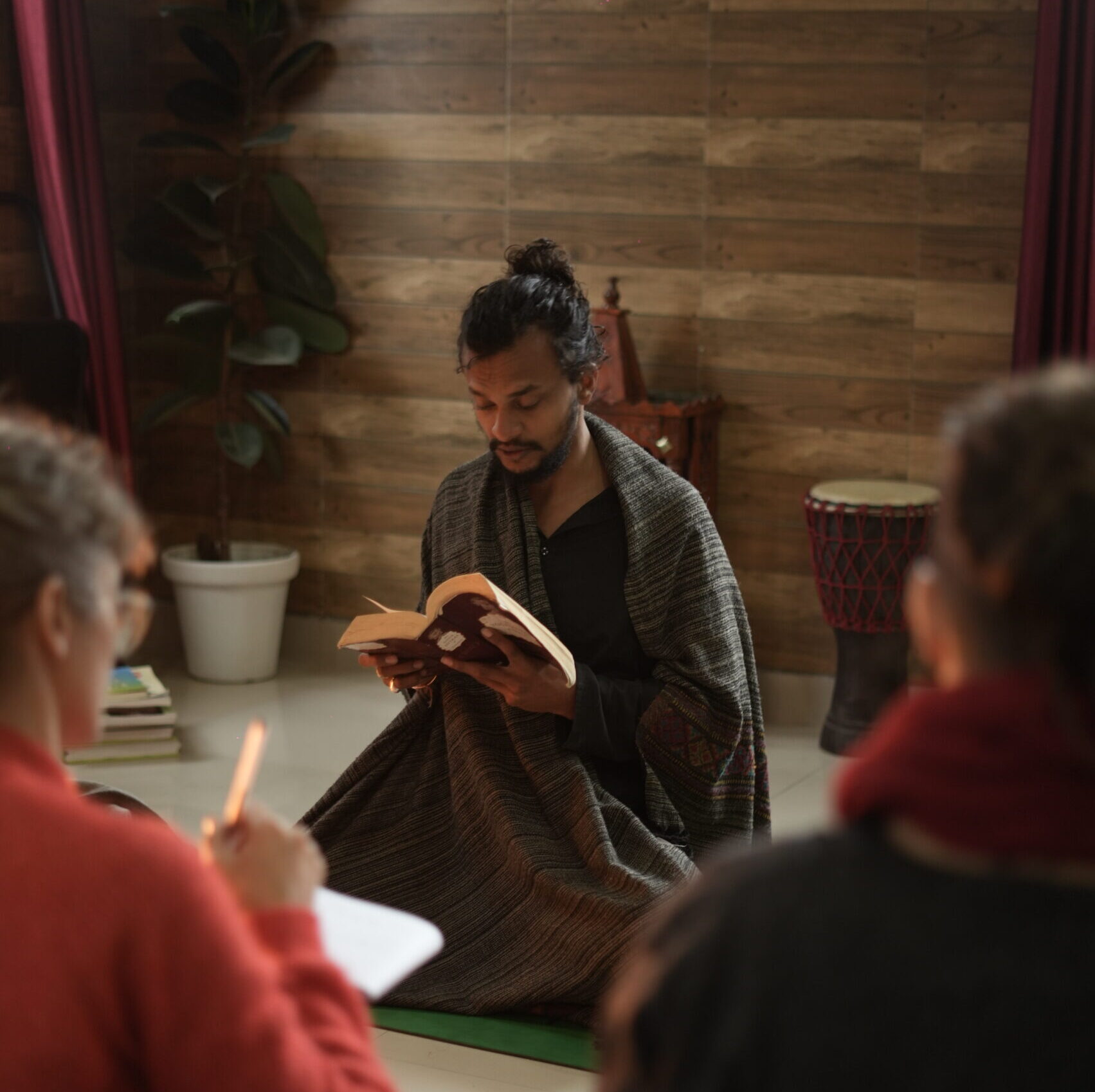
This article explores the hierarchical structure of space-time through the lens of Vedic philosophy, offering a deep dive into the spiritual and cosmological principles that govern our existence. Drawing on the concepts of Ākāśa (space) and Kāla (time), it illustrates how ancient wisdom perceives reality as cyclical, multidimensional, and deeply interconnected. From the vast epochs of Yugas to the subtle realms of the Lokas, the text bridges metaphysical insights with modern scientific parallels—such as quantum entanglement and space-time curvature. For spiritual seekers and curious minds alike, this perspective offers a timeless map to liberation, one that resonates far beyond traditional doctrines of physics.
Whether you’re exploring the metaphysical side of the universe or looking to deepen your understanding of the cosmos through ancient knowledge, this article acts as a spiritual compass—much like embarking on a Hatha yoga teacher training in India. Just as students experience transformation in the Yoga Teacher Training in Prakruti Yoga Shala, this wisdom transforms our view of time, space, and self.
Introduction
In a world increasingly shaped by linear thinking and material paradigms, the ancient Vedic perspective offers a profound, multidimensional understanding of reality—where space and time are not merely scientific constructs but sacred dimensions of existence. Rooted in the eternal wisdom of the Vedas, this perspective blends cosmology, metaphysics, and spiritual insight into a tapestry of awe-inspiring depth.
🕉️ Discover a wisdom tradition that redefines the very fabric of existence.
1. Ākāśa (Space) and Kāla (Time) as Fundamental Realities
According to the Vedas, Ākāśa and Kāla are not inert backdrops but living, dynamic forces that shape and reflect the flow of life:
- 🌌 Ākāśa, or ether, is the subtle substratum of all creation. It is the first element to emerge in the cosmic order and the medium through which sound (Shabda) travels, linking it intimately with consciousness. Think of Ākāśa as the spiritual internet, an invisible web that holds the universe together.
- ⏳ Kāla, or time, is the great orchestrator—the force that governs all changes, from the rise and fall of civilizations to the blink of an eye. In its ultimate form, Mahākāla, it is the great dissolver, transcending linear measurement and reminding us of impermanence. Kāla is both a clock and a compass, guiding our evolutionary journey.
2. The Hierarchy of Space-Time in the Vedas
The Vedic model of the universe unfolds across multiple layers, each with its own unique space-time experience.
a. Cosmic Level: The Brahmāṇḍa and Yugas
- 🌠 The Brahmāṇḍa or “Cosmic Egg” encapsulates the entire universe as a pulsating entity, cyclically created and dissolved. It’s not just a symbol—it’s a cosmological reality pointing to our infinite origin.
- 📿 Time is quantified through vast epochs: Yugas, Mahayugas, and Kalpas. A single day of Brahmā spans over four billion human years, emphasizing the eternal rhythm of Sṛṣṭi (creation), Sthiti (maintenance), and Pralaya (dissolution). These cycles are cosmic breaths—expansion and contraction on a divine scale.
b. Subtle (Astral) Level: Lokas and Alternate Timelines
- 🪐 Reality is partitioned into multiple Lokas (planes of existence) such as Bhūloka, Svargaloka, and Brahmaloka. The multiverse isn’t fiction—it’s embedded in Vedic thought.
- 🌀 Time flows differently across these realms. What is one day in Svarga may be years in Bhūloka, showing that time is not universal but relative to one’s existential plane. Time bends as consciousness ascends.
c. Individual Level: The Living Universe Within
- 🔮 The microcosm mirrors the macrocosm. Our subtle body (Sūkṣma Śrīra) carries karmic imprints (Saṃskāras) that traverse lifetimes. Every breath we take echoes with ancient memories.
- 🌞 While the physical body lives within linear time, the Ātman (soul) remains beyond time and space, silently observing the dance of destiny and free will. The soul is the witness—eternal, serene, and unchanged.
3. Beyond Space-Time: Transcendence in Vedic Thought
The Vedic seers understood that space-time is a product of Māyā, the illusory framework in which duality operates.
- 🕊️ Parabrahman—the ultimate reality—is beyond Ākāśa and Kāla. It is unchanging, indivisible, and eternal. Beyond the veil lies unity—where nothing begins or ends.
- 🧘 Yoga and meditation are the bridges to this higher awareness. In deep Samādhi, practitioners report experiences of timelessness, where the boundaries of space dissolve into unity and bliss. The deeper the silence, the clearer the truth.
4. The Cyclic Nature of Space-Time
Contrary to the Western linear model, Vedic philosophy embraces cycles:
- 🔄 Everything moves in loops—days, seasons, lifetimes, and cosmic ages. The spiral of time teaches us that endings are beginnings.
- 🕊️ Spiritual progress is also cyclic, echoing the patterns of Saṃsāra (rebirth), and culminating in Mokṣa (liberation), where one escapes the time loop. Freedom lies not ahead, but beyond.
5. Integration of Science and Vedic Wisdom
Surprisingly, modern physics finds echoes of Vedic insights:
- 🌌 Space-time curvature in relativity theory mirrors Ākāśa’s dynamic nature. Science is rediscovering the truths our sages intuited.
- 🔗 Quantum entanglement resonates with the interconnectedness described in Vedic metaphysics. We are all threads in a divine tapestry.
🌊 The universe’s potential cyclic birth and rebirth align with the concept of Kalpas. What science theorizes, the Vedas realized millennia ago.
Conclusion: Beyond the Veil of Space and Time
The Vedic perspective invites us to reimagine space and time not as constraints but as divine dimensions that guide our evolution. From the depths of Ākāśa to the cosmic pulse of Kāla, and finally to the stillness of Parabrahman, this ancient wisdom helps us transcend the illusion and remember who we truly are—timeless, infinite, and one with the universe.
🌟 In remembering, we awaken—not to the world, but to the self behind it.